Clinical Example: Multiple finger degloving treated with medial cross arm flap and temporary syndactyly
| Degloving injuries are commonly the result of industrial injuries involving high speed rollers or presses. Reconstruction is difficult because of the complexity of soft tissue loss. Skeletal elements maintain vascularity only to the most proximal phalanx distal to the most proximally degloved joint, and more distal phalanges should be discarded. This case demonstrates the first stages of reconstruction of a degloving injury of all fingers using a medial cross arm flap and temporary syndactyly within the flap. |
| Click on each image for a larger picture |
| Initial injury: |
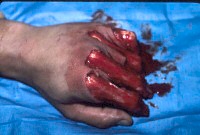
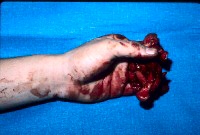
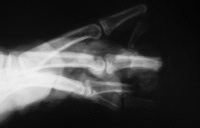
| After debridement, the degloved digits were placed in individual pockets in the opposite medial arm. Tunnels were elevated just deep to the dermis with fingers spread apart to maximize the area of skin transferred to each digit. This positioning allows palmar resurfacing with full thickness skin and dorsal cover with subcutaneous tissue and skin graft. |
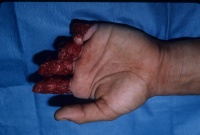
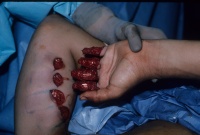
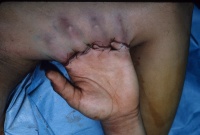
| The flap was delayed in stages and then divided. The donor site and dorsal hand were covered with split thickness skin grafts. |
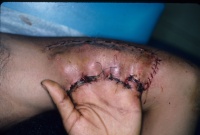
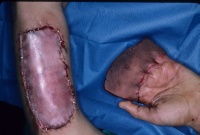
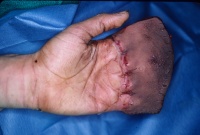
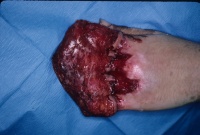
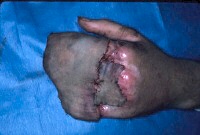
| Later result, after syndactyly release of the border digits with additional skin grafts. |
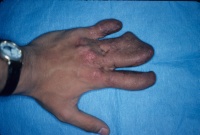
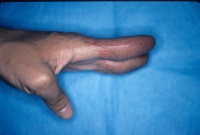
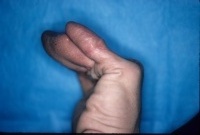
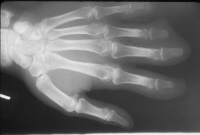
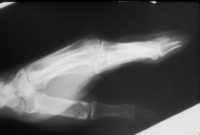
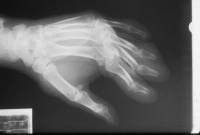
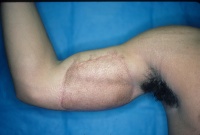
|
Search for... Degloving hand injuries Cross arm flap
|
Case Examples Index Page | e-Hand home |